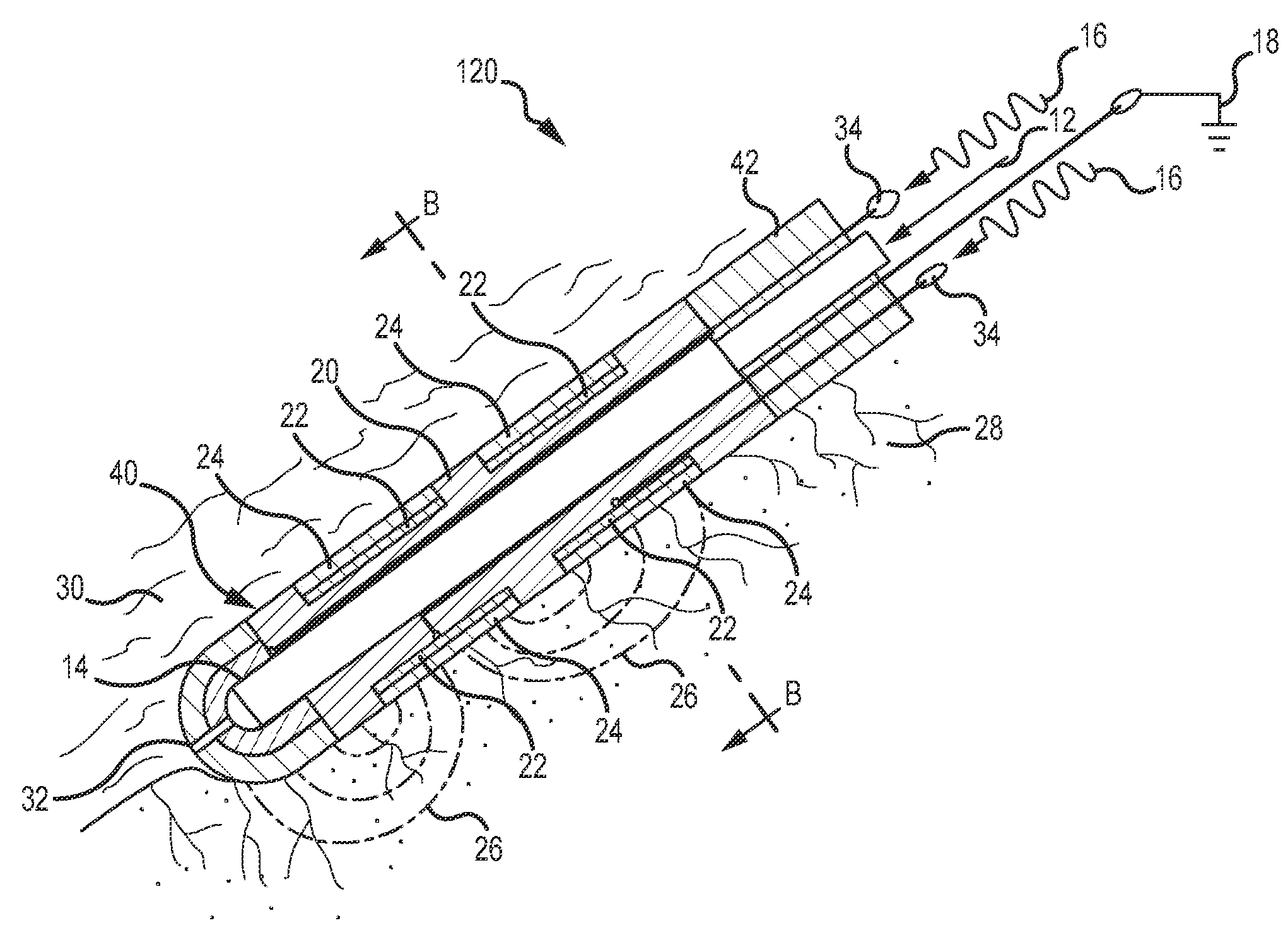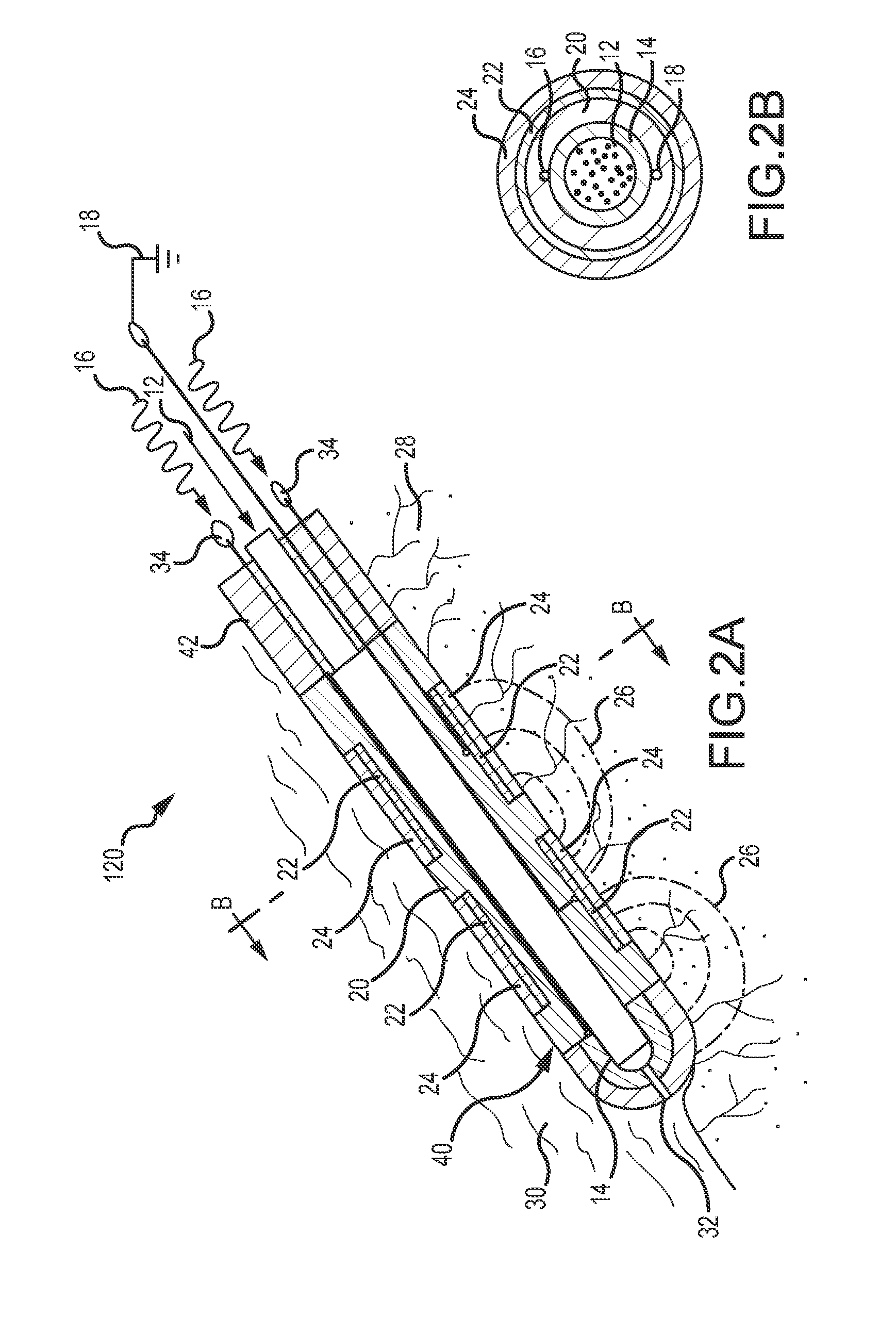Pressure-sensitive flexible polymer bipolar electrode
a flexible, polymer bipolar electrode technology, applied in the field of electrophysiology devices, can solve the problems of increasing the vulnerability to thromboembolism, varying levels of congestive heart failure, and significant patient discomfort and even death
- Summary
- Abstract
- Description
- Claims
- Application Information
AI Technical Summary
Benefits of technology
Problems solved by technology
Method used
Image
Examples
Embodiment Construction
[0019]Pressure-sensitive conductive composite (PSCC) electrodes are disclosed, along with methods for using an electrode for tissue ablation and targeted drug delivery.
[0020]As used herein, “pressure-sensitive polymer,”“pressure-sensitive composite” and “PSCC” generally mean a pressure-sensitive conductive composite that has unique electrical properties wherein the electrical resistance of the PSCC varies inversely in proportion to the pressure that is applied to the PSCC. Useful PSCCs commonly have a high electrical resistance when quiescent (not under pressure), and become conductive under pressure, where the electrical resistance may fall, for example, to less than one ohm. When quiescent, the PSCC material can have a resistance that is greater than 100,000 ohms to greater than 1M ohms, and as a non-conductor (e.g., having a resistance greater than 10M ohms).
[0021]The present invention can use various pressure-sensitive conductive composite materials. For example, U.S. Pat. No. 6...
PUM
 Login to View More
Login to View More Abstract
Description
Claims
Application Information
 Login to View More
Login to View More - R&D
- Intellectual Property
- Life Sciences
- Materials
- Tech Scout
- Unparalleled Data Quality
- Higher Quality Content
- 60% Fewer Hallucinations
Browse by: Latest US Patents, China's latest patents, Technical Efficacy Thesaurus, Application Domain, Technology Topic, Popular Technical Reports.
© 2025 PatSnap. All rights reserved.Legal|Privacy policy|Modern Slavery Act Transparency Statement|Sitemap|About US| Contact US: help@patsnap.com



